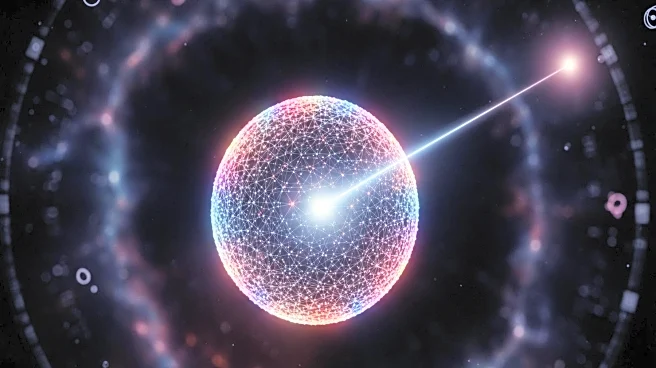What is the story about?
What's Happening?
Researchers at the University of Innsbruck have successfully demonstrated a scalable quantum network node, a significant advancement in quantum communication technology. Led by Ben Lanyon, the team used a string of ten calcium ions in a prototype quantum computer to create a node capable of storing and sharing quantum information via light particles. This process involved moving ions into an optical cavity and using a laser pulse to emit photons entangled with the ion's state. The method achieved a high ion-photon entanglement fidelity of 92 percent, indicating robust precision. This development is a step towards building larger quantum networks, which could revolutionize secure communication, distributed computing, and precision sensing systems.
Why It's Important?
The creation of scalable quantum nodes is crucial for the future of quantum networks, which promise ultra-secure communication and the ability to link distant quantum computers into powerful systems. This technology could transform industries reliant on secure data transmission and precise measurements, such as telecommunications and scientific research. The scalability of the Innsbruck setup suggests potential for widespread application, connecting quantum processors across various locations. This advancement not only marks a technical milestone but also lays the groundwork for next-generation quantum technologies, potentially impacting global communication infrastructure and scientific exploration.
What's Next?
The research team plans to extend their setup to larger registers, potentially containing hundreds of ions, to further enhance the scalability of quantum networks. This could lead to practical applications in quantum-secure communication and distributed quantum computing. Additionally, the technology may advance optical atomic clocks, enabling a worldwide timekeeping system with unmatched accuracy. Continued support from institutions like the Austrian Science Fund and the European Union will be essential for further development and implementation of these quantum technologies.
AI Generated Content
Do you find this article useful?















